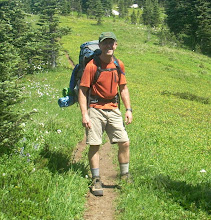That's 29 per day.
The reports sometimes result in the discovery of explosives that have nothing to do with terror, like when a volunteer doing gardening at a Manhattan cemetery last year dug up a discarded bag containing plastic explosives. But the vast majority of suspicious packages turn out to be nothing more than briefcases, backpacks or shopping bags innocently left unattended or discarded in transportation hubs or other high-traffic locations.
You'll notice there's not a single mention of the discovery of explosives (or anything else) that did have something to do with terror. Back in 2008, the New York Times published an article about how ineffective the "If you see something, say something" program is.
Returning to the NBC New York article, I'm blown away by this:
 The NYPD says such false alarms have become a frequent but necessary annoyance for authorities laboring to protect a nervous city in the post-9/11 world.
The NYPD says such false alarms have become a frequent but necessary annoyance for authorities laboring to protect a nervous city in the post-9/11 world.How incredibly wasteful. It's as if we have an innumerable multitude of boys watching the sheep and each one takes a turn at calling, "Wolf!"
The Nationwide SAR Initiative (PDF) (SAR stands for suspicious activity reporting) is a federal program started in December 2009 to gather up all the reports of suspicious activity.
What might not seem significant (for instance, taking a picture of a ferry during loading), when combined with other actions and activity, may become a composite indicating the possibility of criminal—even terrorist— activity. Traditionally, street officers have had little to do with counterterrorism. But after the terrorist attacks of September 11, it became obvious that al Qaeda members had prepared not only in far-off Afghan training camps but also in Minnesota and flight schools in Florida. Therefore, in today’s policing, “connecting the dots” of suspicious activity before an incident occurs has become an integral and imperative job for America’s law enforcement, from the officer on the street to supporting analysts. The NSI is designed to do just that, connect the dots.
Keep in mind that taking photos of a ferry during unloading may be less suspicious. I have to wonder how difficult it is to connect the dots when many of the dots don't belong so I'm curious how the NSI program filters their reports. After all, nobody wants to be the the person who saw something, didn't up channel it, and then have "something happen". We desperately want to be on the safe side--no matter what the cost.

1 comment:
We're all suspicious objects now.
Might as well call ourselves in.
Post a Comment